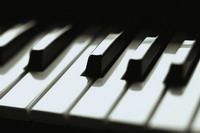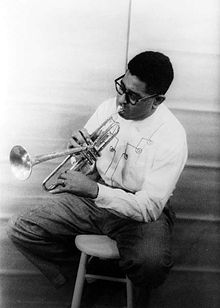Piano Sheets > Dizzy Gillespie Sheet Music > Salt Peanuts (ver. 3) Piano Sheet
Salt Peanuts (ver. 3) by Dizzy Gillespie - Piano Sheets and Free Sheet Music

About the Song
Other avaliable versions of this music sheet: Version 1 Version 2 Version 3
"Salt Peanuts" is a bebop tune composed by Dizzy Gillespie in 1942, credited "with the collaboration of" bebop drummer Kenny Clarke. It is unique in that it has a small sung part in which the singer sings "Salt peanuts, salt peanuts." Most bebop songs have no singing (aside from Scat singing.) Many consider the song a bop jazz standard. Perhaps one of the most famous recordings of this tune is on the Live at the Massey Hall, Toronto, 1953 album, where Dizzy Gillespie and Charlie Parker played with one of their most successful line-ups, which included Max Roach on drums, Bud Powell on piano and Charles Mingus on bass.
The "Salt Peanuts" motif predates Gillespie/Clarke by at least several months, as it appears as a six-note instrumental phrase played on piano by Count Basie on his July 2, 1941 recording of "Basie Boogie" for the Columbia/OKeh label. Basie also played it in a recorded live.
Download this sheet!
About the Artist

Random article
How to read sheet music How to read sheet music
Reading piano sheet music is no simple thing. For it first we require to know the individual elements of the composition itself in order to read sheet music. You must make sure that you are familiar with that particular composition's language before you tackle the entire piece.
In order to grasp the intent and nuances of the piece quickly for reading piano sheet music following steps are to be considered:-
1> To start with have a look over entire composition to get the feel of the length and style of the sheet music. This first run through is just to have a quick overview of the composer's work. This will slowly prepare you to read the sheet music.
(More...)
